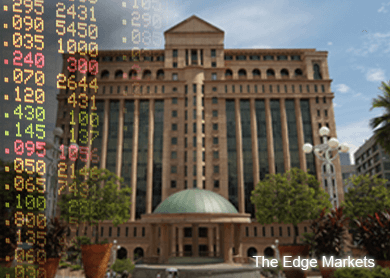
This article first appeared in The Edge Financial Daily, on November 27, 2015.

US equity markets ended fairly muted on Wednesday as investors squared off their positions ahead of the foreshortened trading week of the Thanksgiving holiday and reduced trading hours today. The S&P 500 Index inched down 0.27 of a point to 2,088.87, while the Dow Jones Industrial Average gained 1.2 points to end at 17,813.39.
The FBM KLCI moved in a quiet range of 27.2 points for the week with high volumes of 2.33 billion to 2.95 billion shares traded. The index closed at 1,683.09 yesterday, down 1.33 points from the previous day as blue-chip stocks like CIMB Group Holdings Bhd, Genting Malaysia Bhd, Kuala Lumpur Kepong Bhd, Petronas Chemicals Group Bhd and Petronas Dagangan Bhd caused the index to inch down on minor profit-taking activities. The ringgit strengthened to 4.2220 against the US dollar as Brent crude turned firmer to US$44.10 (RM186.10) per barrel.
The index rose on a rally from a 801.27 low (October 2008) to its 1,896.23 all-time high (July 2014), and this represented an extended Elliott Wave “flat” rebound in a “pseudo-bull” rise completed. The next few months’ index price movements after July 2014 comprised key swings of 1,837.28 (low), 1,879.62 (high), 1,766.22 (low), 1,858.09 (high), 1,671.82 (low), 1,810.21 (high), 1,706.18 (low), 1,831.41 (high), 1,774.3 (low), 1,867.53 (high), 1,685.03 (low), 1,744.19 (high), 1,503.68 (low), 1,691.93 (high), 1,595.22 (low), 1,727.41 (high) and 1,644.29 (low).
The index’s daily signals are mainly positive, with the CCI, DMI, stochastic and MACD indicators showing obvious “buy” signals. The oscillator indicator remains only marginally negative for now. As such, the index’s obvious support levels are seen at 1,595, 1,644 and 1,683, while heavy profit-taking in resistance areas of 1,688, 1,727 and 1,744 may cap any index advances.
The KLCI’s 18-day and 40-day simple moving averages (SMAs) depict an emerging uptrend for its short-term daily chart. The index’s price bars are now between the 50-day and 200-day SMAs, and this depicts a neutral phase for the KLCI in the medium term.
Due to the better tone for the KLCI, we are recommending a chart “buy” on Can-One Bhd (Can-One). A check on the Bloomberg consensus reveals that no research house covers this stock. Maybank Investment Bank Bhd does not cover this stock fundamentally, too.

Can-One manufactures tin cans and jerry cans for the edible oil and food industries. Its current price-earnings ratio is at a very low level of 7.7 times, while its price-to-book ratio is at a marginally elevated level of 1.19 times. Its return on equity is at a fine 14.8%. For the past five years, the company’s sales revenue and net income have increased steadily. There was no significant news on the stock recently.
Can-One’s chart trend in the daily, weekly and monthly time frames is very firmly up. Its share price has made an obvious surge since its major weekly Wave-2 low of RM2 in August. Since that RM2 low, Can-One has risen to its recent high of RM4.70 this month.
As its share price broke above its recent key critical resistance levels of RM2.89 and RM3.97, look to buy Can-One on any dips to its support areas as the moving averages depict a very firm short- to long-term uptrend for this stock.
The daily, weekly and monthly indicators (like the CCI, DMI, MACD and Oscillator) have issued clear “buy” signals, and now show firm and obvious indications of Can-One’s eventual surge towards higher levels. It would attract firm buying activities at the support levels of RM2.97, RM3.97 and RM4.35. We expect Can-One to witness minor profit-taking at the resistance levels of RM4.38, RM4.47 and RM4.70. Its upside targets are located at RM5.60, RM6.20, RM6.52 and RM6.75.
Lee Cheng Hooi is the regional chartist at Maybank Kim Eng. The views expressed in the article are the opinions of the writer and should not be construed as investment advice. Please exercise your own judgment or seek professional advice for your investment decisions. Technical report appears every Wednesday and Friday.